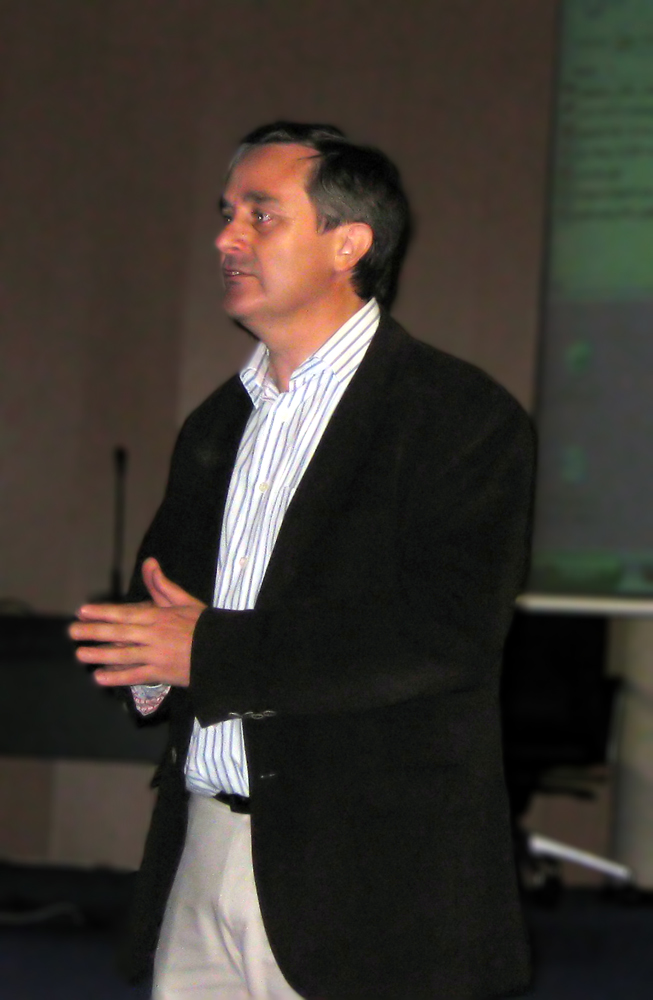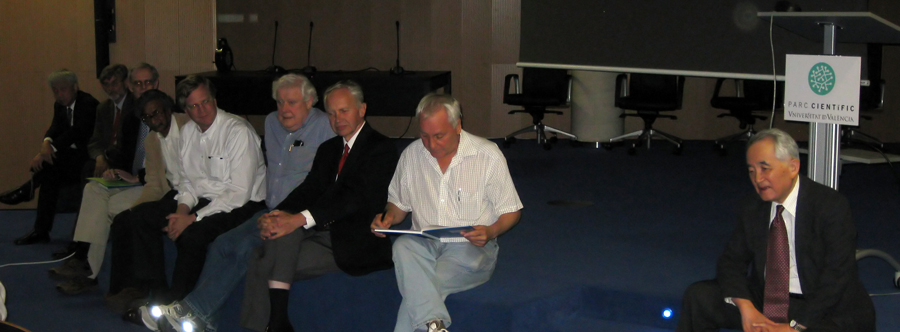Director's Corner
10 June 2010
 Barry Barish |
The latest ILC technical review
I periodically write about aspects of the review process for our work in the ILC Global Design Effort. Since such reviews represent checkpoints on our progress, independent assessments of our work, and also a mechanism for constructive advice, I feel that sharing some key outcomes is an effective way to inform and include the community. Today, I will report on the latest meeting of the Project Advisory Committee (PAC) that reviews both the accelerator and detector technical efforts and reports to the International Linear Collider Steering Committee (ILCSC). This recent meeting was particularly important, because at this time we are dealing with differing opinions regarding the proposed baseline changes for the ILC technical design.
The PAC committee met on 13 and 14 May 2010 in Valencia, Spain, where it was graciously hosted by Juan Fuster Verdu and the Instituto de Fisica Corpuscular (IFIC). The meeting opened with a very informative set of talks on the Spanish particle physics programme, which has thrived in recent years. In 2008, we signed a memorandum of understanding (MOU) with Spain on participation in the Global Design Effort that makes their efforts on ILC an official part of the Spanish high-energy physics programme.
Following the introduction to Spanish high-energy physics programme, we spent a full day presenting the Global Design Effort programme and discussing it with the PAC. Our presentations consisted of both a review of the context, motivation, and plans for assessing and acting upon the baseline changes proposed last year (which we call "SB2009"), a set of review talks on the status of major parts of our R&D programme, and a report on the ILC-Compact Linear Collider (CLIC) collaboration. The detector review consisted of reports from the two validated detector groups and on the five common task groups, as well as their work on studying potential physics performance issues in the accelerator SB2009 baseline proposal.
The PAC report presents its summaries and recommendations in three parts: general, accelerator and detectors. I give a few highlights below:
The general summary and comments highlighted what the PAC observed as communication issues between the detector and accelerator efforts. They considered them evident from the separation of the presentations and closeouts at this meeting. I believe we all are in agreement that this is an issue, partially due to the purposeful separation of the two organisational structures, partially due to each effort concentrating on their own non-overlapping work, and finally, because of not enough effort to stimulate the interactions by the leadership. I accept my share of the blame. We are well aware of this communication problem ourselves and are in the process of taking various corrective actions. I will address the problem and hopefully solutions more directly in a future column.
In my opinion, the PAC's most important general point, and one I couldn't agree with more, was: that the “GDE cost containment efforts are strongly supported by the PAC, and the Committee notes that the detector community needs to also be supportive of them; the PAC is very concerned that increases in the ILC costs above those given in the RDR could jeopardize the project.” For precisely the reasons given by the PAC, cost containment has been a major motivation for our proposed SB2009 changes and we must convince and have the support of the larger ILC community before making final assessments and decisions. The PAC makes several other important points in their general comments, including giving their support for instituting a formal change control process.
The summary and recommendations section on the accelerator has several supportive points in areas questioned earlier by the Accelerator Advisory Panel (AAP). I don't take these as being necessarily in disagreement with the AAP, but rather a combination of our answering some of those concerns and our making the arguments more effectively. In particular, the PAC expressed support for the low-power option, recommending that we study what will be involved in keeping the high-power option open in the future, and they also explicitly support “the location of the positron source at the end of the electron linac.”
For the detectors, the committee made special note of the problem of loss of personnel to other detector efforts and they expressed their support for the ILCSC initiative to help with critically missing technical support, again an area I will discuss in a future column.
Although reviews are often considered by many of us as distracting, involving excessive preparatory work and follow-up, depending on the recommendations, this particular review in their brief report captured many of the key issues facing us at this time. We thank the PAC committee and individual members for both support and constructive criticism.
-- Barry Barish


